Family

 My niece, Andrea Beach has always had a passion for the culinary arts. She also has a heart for helping people. Those two things don’t always go together, but Andrea has figured out a way to do that. Since moving back to Casper, Wyoming from Rawlins, Wyoming, she has been working at Mountain Plaza Assisted Living. She doesn’t really have close contact with any of the residents, but Andrea has been working to make their mealtimes special for almost a year now. She loves creating meals that make the residents feel like they are eating in a high-end restaurant, and yet they are getting good nutrition and amazing taste too. Before Andrea started working there, the meals were great, but now they are spectacular!!
My niece, Andrea Beach has always had a passion for the culinary arts. She also has a heart for helping people. Those two things don’t always go together, but Andrea has figured out a way to do that. Since moving back to Casper, Wyoming from Rawlins, Wyoming, she has been working at Mountain Plaza Assisted Living. She doesn’t really have close contact with any of the residents, but Andrea has been working to make their mealtimes special for almost a year now. She loves creating meals that make the residents feel like they are eating in a high-end restaurant, and yet they are getting good nutrition and amazing taste too. Before Andrea started working there, the meals were great, but now they are spectacular!!
Andrea loves being back in Casper and around all the family. She and my niece, Jenny Spethman have grown 
 so close. They really are best friends, and they love to do lots of things together. Cousins should be close friends, I think, and these girls really are. They hike together and hang out together. It’s really very nice for them, since there are only three girls in the two families, out of eight people. Those girls are outnumbered!! They have to stick together!! I’m happy for the girls. All too often, as we reach adulthood, our friend become fewer and fewer, or at least that’s how it seems to me. I realize that may just be me, but these girls are extroverts, while I am an introvert. Plus, what better friend is there in the world than sisters and cousins. They share common bonds that just aren’t shared with a friend. I’m not knocking friends, but sisters and cousins are with you, no matter what.
so close. They really are best friends, and they love to do lots of things together. Cousins should be close friends, I think, and these girls really are. They hike together and hang out together. It’s really very nice for them, since there are only three girls in the two families, out of eight people. Those girls are outnumbered!! They have to stick together!! I’m happy for the girls. All too often, as we reach adulthood, our friend become fewer and fewer, or at least that’s how it seems to me. I realize that may just be me, but these girls are extroverts, while I am an introvert. Plus, what better friend is there in the world than sisters and cousins. They share common bonds that just aren’t shared with a friend. I’m not knocking friends, but sisters and cousins are with you, no matter what.
Andrea has always had a flare for the artistic. She has done some paintings, and they are really excellent. 
 Recently, however, she had the opportunity to capture some of God’s artwork, which is beyond compare, as we all know. Nevertheless, it takes a good photographer to capture the Auroras in the dark, and without shaking the camera. Andrea and her son, Chris stayed up well past midnight to she could capture these shots for her mom, Caryl Reed and stepdad, Mike Reed, who just couldn’t stay awake for it. Sorry Caryl and Mike, I had to tattle!! Andrea and Chris got an amazing show, and amazing shots of it. Today is Andrea’s birthday. Happy birthday Andrea!! Have a great Day!! We love you!!
Recently, however, she had the opportunity to capture some of God’s artwork, which is beyond compare, as we all know. Nevertheless, it takes a good photographer to capture the Auroras in the dark, and without shaking the camera. Andrea and her son, Chris stayed up well past midnight to she could capture these shots for her mom, Caryl Reed and stepdad, Mike Reed, who just couldn’t stay awake for it. Sorry Caryl and Mike, I had to tattle!! Andrea and Chris got an amazing show, and amazing shots of it. Today is Andrea’s birthday. Happy birthday Andrea!! Have a great Day!! We love you!!
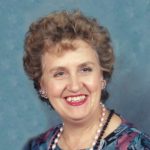
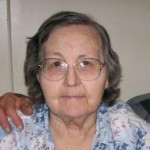 Motherhood is such a complex occupation. Your actual title might be mom, mommy, momma, or some other version of the name, but you are so much more. You are a nurse, teacher, nurturer, referee, maid…well, you get the picture. A mother is the wearer of many hats, and we wouldn’t even be here without her. I have been blessed with two moms, Collene Spencer and Joann Schulenberg; two daughters, Corrie Petersen and Amy Royce; and two granddaughters-in-law with children, Karen Petersen and Athena Petersen. Babies are such a blessing, and then they grow into wonderful adults and the blessings continue for years to come.
Motherhood is such a complex occupation. Your actual title might be mom, mommy, momma, or some other version of the name, but you are so much more. You are a nurse, teacher, nurturer, referee, maid…well, you get the picture. A mother is the wearer of many hats, and we wouldn’t even be here without her. I have been blessed with two moms, Collene Spencer and Joann Schulenberg; two daughters, Corrie Petersen and Amy Royce; and two granddaughters-in-law with children, Karen Petersen and Athena Petersen. Babies are such a blessing, and then they grow into wonderful adults and the blessings continue for years to come.

Mother’s Day becomes something different wen you mom or mother-in-law are in Heaven. While they aren’t really gone, they are gone from our view, and that makes us sad. I’m sure that, like me, you probably thought your mom would always be there with you. We never expect them to leave us until they are gone, and then we realize just how much we will miss them. Those moments when we would love to call them, to say Hi, or to ask a question, or talk about our day, or even to cry on their shoulder. The day our mom leaves us is one of the hardest days we will ever have.
When we become moms, we find out how rewarding motherhood can be, but also, just how hard it can be too. Things like diaper changes, formula, and spitting up, soon give way to school days, school supplies, school clothes, and of course, the dreaded homework help. Still, watching them grow and mature is among the most 
 rewarding things we will ever experience. Then, before our very eyes, they are making us into grandmothers, and the cycle of life continues. Our babies having babies and before we know it our grandbabies are having babies. Time just doesn’t stand still. It is always marching on.
rewarding things we will ever experience. Then, before our very eyes, they are making us into grandmothers, and the cycle of life continues. Our babies having babies and before we know it our grandbabies are having babies. Time just doesn’t stand still. It is always marching on.
Today is a day when we get to celebrate our mothers, our daughters who are mothers, and our granddaughters who are mothers. We celebrate, because they have made us so happy. They are among the most special people ever to walk the face of the Earth. Today is Mother’s Day. Happy Mother’s Day to the mothers in my life, and the mothers in yours. Have a great day, ladies!! We love you so much!!

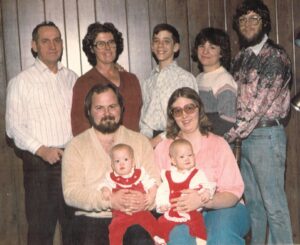 My uncle, Larry Byer was just 20 months older than his little sister, my mom, Collene Spencer, who was followed 24 months later by their little brother, Wayne Byer. The three of them being as close as they were tended to try their mother, Hattie Byer’s patience at times. Boys being boys, and my mom being in the middle made for triple trouble. If you know anything about double trouble, I’m sure you can imagine what triple trouble was like. It was a good thing my grandmother was a tough lady…small but mighty, as they say. When her triple trouble kids got under her skin, she had no trouble handling their antics.
My uncle, Larry Byer was just 20 months older than his little sister, my mom, Collene Spencer, who was followed 24 months later by their little brother, Wayne Byer. The three of them being as close as they were tended to try their mother, Hattie Byer’s patience at times. Boys being boys, and my mom being in the middle made for triple trouble. If you know anything about double trouble, I’m sure you can imagine what triple trouble was like. It was a good thing my grandmother was a tough lady…small but mighty, as they say. When her triple trouble kids got under her skin, she had no trouble handling their antics.
After high school, Uncle Larry went into the Army. This was during the Korean War, but he was stationed in Germany. and he also spent some time in Austria. He said he wished he had been in Korea, but I’m not so sure he really would have. My guess is that he felt like he should have been there with so many others. After the war, he married my Aunt Jeanette, and together they had two children, Larry Wayne Byer and Tina Grosvenor. They also have six grandchildren, three granddaughters, including a set of twins, as well as three grandsons, and a number of great grandchildren. They were happily married for 55 years until Uncle Larry’s passing.
Uncle Larry worked for a number of years for Texaco Refinery, and when they closed down, he was not at 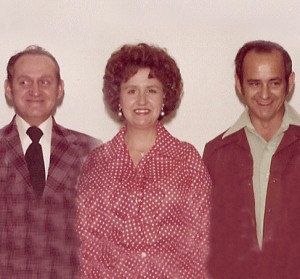
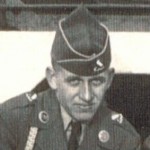 retirement age, so he took the transfer, and they moved to Louisianna. The split up their land here, outside of Caser and gave it to their kids. It must have been strange to move to a hot climate after living their whole lives in Wyoming, where we have more months of cold weather than we do warm weather. They remained in Louisianna until Uncle Larry was ready to retire, then came back to Wyoming where his lived out his life. Uncle Larry died of a heart attack on December 22, 2011, and we were very saddened to see him go. Today would have been Uncle Larry’s 90th birthday. Happy birthday in Heaven Uncle Larry. We love and miss you very much.
retirement age, so he took the transfer, and they moved to Louisianna. The split up their land here, outside of Caser and gave it to their kids. It must have been strange to move to a hot climate after living their whole lives in Wyoming, where we have more months of cold weather than we do warm weather. They remained in Louisianna until Uncle Larry was ready to retire, then came back to Wyoming where his lived out his life. Uncle Larry died of a heart attack on December 22, 2011, and we were very saddened to see him go. Today would have been Uncle Larry’s 90th birthday. Happy birthday in Heaven Uncle Larry. We love and miss you very much.
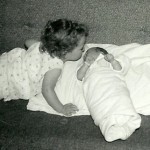
 When I first came home from the hospital, after I was born, I found my sister, Cheryl Masterson waiting there. She has always been in my life. My first blessing of a sister, and I was hers. We would later go on to have three more sisters; Caryl Reed, Alena Stevens, and Allyn Hadlock…three more blessings of sisterhood. What great blessings my sisters have been to me, and I know they all feel the same way.
When I first came home from the hospital, after I was born, I found my sister, Cheryl Masterson waiting there. She has always been in my life. My first blessing of a sister, and I was hers. We would later go on to have three more sisters; Caryl Reed, Alena Stevens, and Allyn Hadlock…three more blessings of sisterhood. What great blessings my sisters have been to me, and I know they all feel the same way.
Cheryl is a strong woman. She may not realize just how strong she really is, but I see it. She raised her five children, Chantel Balcerzak, Toni Chase, Rob Masterson, Liz Masterson, and Jenny Spethman, by herself. She was a single mom with an absent ex-husband. She didn’t sit and cry, she got up and went to college to become a Legal Secretary and is now one of the most valuable and indispensable employees at the firm where she has worked for many years. In addition to that, when our parents needed care, Cheryl lived with them and took every “night shift” helping them. She came home from work and cooked, cleaned, and gave them their medicines. She helped with their evening and weekend needs. We couldn’t have handled it without her. Of course, she didn’t do it alone. We all helped, but her living there gave us the evenings off to a degree, and that was a huge help, and we will be forever grateful to her.
Cheryl is a strong Christian woman. These days she spends many of her evenings reading her Bible and other 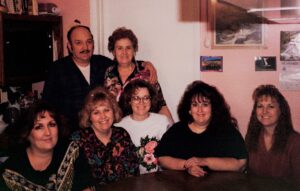
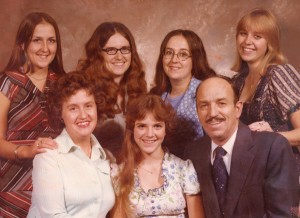 Christian book. She takes the position of family matriarch, when came to her as the eldest sibling, when our parents passed away, very seriously. Of course, there is more to being the matriarch than being the spiritual head of the family. “A family matriarch is a woman who is the head and ruler of her family and descendants. She is usually older and powerful and has authority over family matters.” Of course, she doesn’t practice her position to the fullest extent of its meaning, because we are all grown and have families of our own. Nevertheless, she does try to be a spiritual guide, which is definitely what our parents would have wanted…a kind-hearted, loving Christian voice to keep the family on the right track.
Christian book. She takes the position of family matriarch, when came to her as the eldest sibling, when our parents passed away, very seriously. Of course, there is more to being the matriarch than being the spiritual head of the family. “A family matriarch is a woman who is the head and ruler of her family and descendants. She is usually older and powerful and has authority over family matters.” Of course, she doesn’t practice her position to the fullest extent of its meaning, because we are all grown and have families of our own. Nevertheless, she does try to be a spiritual guide, which is definitely what our parents would have wanted…a kind-hearted, loving Christian voice to keep the family on the right track.
Cheryl is an amazing cook and holds gatherings with her family just about every week. With five children, her family has grown quite large, and that’s the way she likes it. There is nothing that pleases her more than to have all of her children, children-in-law, and grandchildren, and great grandchildren surrounding her and 
 enjoying a good meal and good conversation. And she especially love having all the babies around. These days, Cheryl’s family consists of five children, three sons-in-law, one daughter-in-law, fifteen grandchildren, seven grandchildren-in-law, and eight great grandchildren. All that makes for a rather large gathering…provided they can all make it over. People are all very busy. Today is Cheryl’s 70th birthday!! Happy birthday Cheryl!! Have a great day!! We love you!!
enjoying a good meal and good conversation. And she especially love having all the babies around. These days, Cheryl’s family consists of five children, three sons-in-law, one daughter-in-law, fifteen grandchildren, seven grandchildren-in-law, and eight great grandchildren. All that makes for a rather large gathering…provided they can all make it over. People are all very busy. Today is Cheryl’s 70th birthday!! Happy birthday Cheryl!! Have a great day!! We love you!!

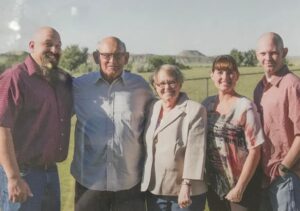 Our aunt, Charlys Schulenberg has been through a lot in the past year. She began having some Neuropathy in her legs and feet. Uncle Butch took her to several neurologists trying to find out if there’s a cure for her. The doctors all say they know of none when it gets that bad. One doctor believes that it all started a couple years ago when her red and white blood cells dropped to a seriously low level. She was very weak. They put her in the hospital and found out that she had no cooper in her blood. So, they gave her copper via IVs. This brought her blood back up, but not high enough. They believe the low copper caused her Neuropathy. They also think that there was too much Zinc in the vitamins she was taking. Apparently, too much Zinc can deplete the copper in your system. So, they got rid of all vitamins that had Zinc in them. Meanwhile, she was home waiting to go back to Billings for another week of IV copper infusions. While she was home however, she, being a very determined lady, refused to take this lying down. She was getting around with a walker, but she was really shaky.
Our aunt, Charlys Schulenberg has been through a lot in the past year. She began having some Neuropathy in her legs and feet. Uncle Butch took her to several neurologists trying to find out if there’s a cure for her. The doctors all say they know of none when it gets that bad. One doctor believes that it all started a couple years ago when her red and white blood cells dropped to a seriously low level. She was very weak. They put her in the hospital and found out that she had no cooper in her blood. So, they gave her copper via IVs. This brought her blood back up, but not high enough. They believe the low copper caused her Neuropathy. They also think that there was too much Zinc in the vitamins she was taking. Apparently, too much Zinc can deplete the copper in your system. So, they got rid of all vitamins that had Zinc in them. Meanwhile, she was home waiting to go back to Billings for another week of IV copper infusions. While she was home however, she, being a very determined lady, refused to take this lying down. She was getting around with a walker, but she was really shaky.
Because of all that, she wasn’t supposed to be cooking. Uncle Butch was doing the cooking. They were going to have spaghetti, but they needed French bread and other groceries, so he went down to store. When he came back 45 minutes later, Aunt Charlys was laying on the floor. She had decided to start the spaghetti, and as she was boiling the spaghetti, her feet went out from under her. She hit the pan of boiling water as she fell, and the pan fell on her, spilling the boiling water and hot spaghetti in her lap causing 3rd, 4th, and 5th degree burns from her knees to her chest. Uncle Butch called an ambulance, and they got her to the hospital, and then, she was flown to the University of Colorado Burn Center. While her burns must have kept her in excruciating pain, Aunt Charlys never lost her sense of humor. She joked with the nurses, even though she was the one in so much pain. She has proven herself to be one tough lady.
After a month in the burn center, she was transferred to the hospital in Forsyth, Montana where they live. She spent another month in the Forsyth Hospital. While she was there, she continued joking and just being herself…always positive and happy. I’m sure that like me, the nurses, doctors, and other staff couldn’t believe that this lady, who was in obvious pain was so cheerful and positive. She has never lost her positive attitude. Her burns soon healed and all that’s left is the scars. Uncle Butch is very proud of her, and so is the rest of her family. Charlys is such a sweet, loving person, and I am so thankful that she is still with us.
Because the Neuropathy in her legs is so bad, she came home in a wheelchair. She couldn’t walk. Uncle Butch got the house set up so she can do things herself. They pulled the carpet up and installed posts by the bed and in bathroom and grab bars in the shower area. When she first came home, Uncle Butch had to help her with bath and bathroom needs, but in true Charlys style, she was determined to do things herself. She worked very hard to make a way for herself. Now, with help of a special chair and the bars on wall, she does many things by herself. All Uncle Butch has to do is stand by to make sure she’s alright. She can pull Herself up out of wheelchair and get things out of the low cabinets. She has one of those two wheeled walkers with solid back legs, and she gets a little further walking with it each day. Uncle Butch says that at times her feet and legs just jump all over the place.
They were scheduled to start copper treatment a couple days before the accident, but they had to cancel that. Meanwhile, their daughter, Andi Kay got a hold of the doctors at the burn center and told them about her copper deficiency. They didn’t want that to continue, so they placed a tube in her nose, that went to her stomach, and fed her copper and drugs straight into the stomach., finally bringing her copper and her red and white cells to normal, Praise God!! With the excellent treatment she was given, she was very soon back to being her old spunky self. Unfortunately, they don’t believe that the damage is done in her feet and legs from the Neuropathy, is reversable. So, she’s in a wheelchair or walking a little with her walker. Meanwhile, being the culinary expert that she is, she has the up the task of “teaching” Uncle Butch to cook, with her supervision, of course. She makes sure to tell him what to do next, even if he probably already knows, but that leaves her basically running the show, and that what is most important. She has been struggling with Macular Degeneration in her eyes, so Uncle Butch reads her the recipes, as well as a lot of articles from papers, a true mark of his love for her. She also has a magnifying glass, that has a small light, and she uses that a lot too.
Their grandson, Christian is living with them and working as a CNA at the Forsyth Hospital. That has been such an amazing blessing. He has been a great help to them. He loves his grandma “to pieces” and gives her all his attention, and the love is “reversed” to him too. Uncle Butch thinks that she wouldn’t be as happy, if Christian wasn’t there. Uncle Butch thinks through all that has happened these last few years, it has only served to bring 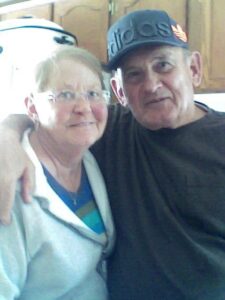
 them closer to one another. They got Aunt Charlys a small electric wheelchair that folds down and is real light. I didn’t know they made folding electric wheelchairs, but it is awesome!! It slides into a trunk or a pickup. She can go shopping with it now. They went to Walmart in Miles City last week, and she had a blast!! Uncle Butch says that you have to watch her, or she’ll run over your feet…kind of like a fifteen-year-old with a driver’s permit, hahaha!! The good news is that now that she has it, she can get out more. Charlys is full of life yet, even with all the problems. Uncle Butch says, “She’s a fighter and she dang sure doesn’t give up.” It’s a miracle that could only be God and the excellent people He placed at the hospitals and at home to care for her. Today is Aunt Charlys’ 82nd birthday. Happy birthday Aunt Charlys!! Have a great day!! We love you!!
them closer to one another. They got Aunt Charlys a small electric wheelchair that folds down and is real light. I didn’t know they made folding electric wheelchairs, but it is awesome!! It slides into a trunk or a pickup. She can go shopping with it now. They went to Walmart in Miles City last week, and she had a blast!! Uncle Butch says that you have to watch her, or she’ll run over your feet…kind of like a fifteen-year-old with a driver’s permit, hahaha!! The good news is that now that she has it, she can get out more. Charlys is full of life yet, even with all the problems. Uncle Butch says, “She’s a fighter and she dang sure doesn’t give up.” It’s a miracle that could only be God and the excellent people He placed at the hospitals and at home to care for her. Today is Aunt Charlys’ 82nd birthday. Happy birthday Aunt Charlys!! Have a great day!! We love you!!
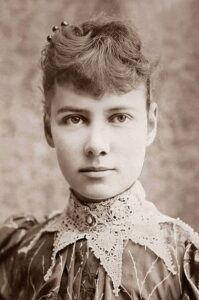
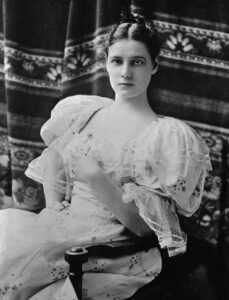 When Elizabeth Jane Cochrane was born on May 5, 1864, there were things that women couldn’t do. It was a man’s world, after all. Not much had changed by the time she was eighteen years old. She was living in Pittsburgh when the local newspaper published an article titled “What Girls are Good For” and according to the article, the answer was having babies and keeping house. These days such an article would have brought immediate outrage, protests, and the author practically strung up. Due to the times, the author would have gotten away with it, but in this case, Elizabeth Cochrane saw it and was very displeased. She was displeased enough, in fact, that she wrote an anonymous rebuttal.
When Elizabeth Jane Cochrane was born on May 5, 1864, there were things that women couldn’t do. It was a man’s world, after all. Not much had changed by the time she was eighteen years old. She was living in Pittsburgh when the local newspaper published an article titled “What Girls are Good For” and according to the article, the answer was having babies and keeping house. These days such an article would have brought immediate outrage, protests, and the author practically strung up. Due to the times, the author would have gotten away with it, but in this case, Elizabeth Cochrane saw it and was very displeased. She was displeased enough, in fact, that she wrote an anonymous rebuttal.
Strangely, the paper’s editor was quite impressed with her rebuttal. He immediately ran an ad in his paper asking the writer to identify herself. Boldly, Elizabeth contacted him, and he hired her on the spot. I’m quite sure that she was not expecting that at all. Still, in this “man’s world” she could not really let anyone know that she was the writer…and maybe that wasn’t exactly a bad thing. Going up against the men is such an argument using her own name might bring some unwanted attention. After all, things were in the very early stages of women’s rights. At that time, most women were still housewives…or schoolteachers, librarians, seamstresses, and such, if they had to work outside the home. So, it was customary at that time for female reporters to use pen names. To top it off, she wasn’t even allowed to pick out her own pen name. The editor gave her one that he took from a Stephen Foster song…Nellie Bly, and it would actually make her famous…as Nellie Bly anyway.
Bly’s passion was investigative reporting, but once again, she found herself stumbling over the whole “man’s world” concept. While she was given work, the paper usually assigned her to more “feminine” subjects…things like theater and fashion. Still, they couldn’t keep her under their thumb very well. After writing a controversial series of articles exposing the working conditions of female factory workers, and after again being relegated to reporting on society functions and women’s hobbies…at age 21 Bly left for Mexico on a dangerous and unprecedented (for a woman) assignment to report of the conditions of the working-class people there. It didn’t take long for her reporting to get her in trouble with the local authorities. Wisely, Bly fled Mexico, but didn’t give up on her story. She later published her dispatches into a popular book.
By the time Bly was 23, she had established a reputation for being a daring and provocative reporter. This drew 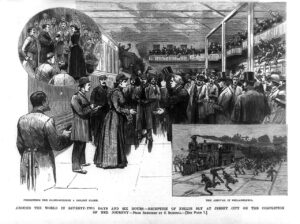 the attention of Joseph Pulitzer’s New York World, where she was hired to basically work under cover. It was the assignment that made her famous. In order to investigate the conditions inside New York’s “Women’s Lunatic Asylum,” Bly took on a fake identity (not really a new concept for someone using a pen name to write), checked into a women’s boarding house, and faked insanity. Bly was so convincing that she soon found herself committed to the asylum. I would personally find that a scary situation, but Bly was dedicated. The report she published of her ten days there was a sensation and led to important reforms in the treatment of the mentally ill.
the attention of Joseph Pulitzer’s New York World, where she was hired to basically work under cover. It was the assignment that made her famous. In order to investigate the conditions inside New York’s “Women’s Lunatic Asylum,” Bly took on a fake identity (not really a new concept for someone using a pen name to write), checked into a women’s boarding house, and faked insanity. Bly was so convincing that she soon found herself committed to the asylum. I would personally find that a scary situation, but Bly was dedicated. The report she published of her ten days there was a sensation and led to important reforms in the treatment of the mentally ill.
Nellie Bly was a woman to be remembered. When she was 24, she undertook her most sensational assignment yet: a solo trip around the world inspired by Jules Verne’s Around the World in 80 Days. Ready to go at the drop of a hat, Bly was given only two days’ notice, before she set out on November 14, 1889. She packed a travel bag with her toiletries and a change of underwear, tied her purse around her neck, and she was off. Pulitzer’s competitor, the New York Cosmopolitan, took that as a challenge and immediately sent out one of its reporters, Elizabeth Bisland, to race Bly, but traveling in the opposite direction. As Pulitzer had hoped, the stunt was a publicity bonanza. Readers gobbled up the regular reports on Bly’s journey and the paper sponsoring a contest for readers to guess the exact time of Bly’s return. The winning guess would be awarded an expense-paid trip to Europe.
Bly made her triumphant return just seventy-two days later, four and half days ahead of Bisland. She had successfully circumnavigated the globe, while traveling alone almost the entire time. It was a world record…the fastest any human had ever made the journey. Suddenly, Nellie Bly was an international celebrity. I still wonder if there was some regret that she was still using the pen name, or maybe it gave her a degree of anonymity, until people recognized her, that is.
After leading an almost insanely adventurous life, Bly decided to retire…so to speak. When she was 31 years old, Bly married industrialist Robert Seaman, a 73-year-old millionaire. With her marriage, she left behind her journalism career and her pen name and became Elizabeth Cochrane Seaman. She helped run the Seaman family business. While working as an industrialist, she patented two inventions, but she knew that business was not really her forte, and sadly, under her leadership the company went bankrupt. I’m sure that with all her life 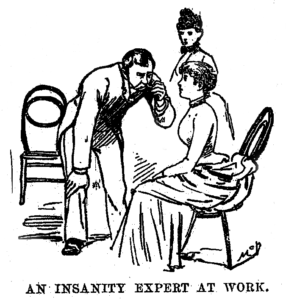
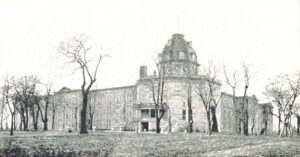 successes, that was a devastating failure for her. With the outbreak of World War I broke out, she returned to journalism, becoming one of the first women reporters to work in an active war zone. I have no doubt that Nellie Bly (Elizabeth Cochrane Seaman) could have done so many more remarkable things in her life, but sadly, her remarkable life ended on January 27, 1922, when she died of pneumonia in New York at age 57.
successes, that was a devastating failure for her. With the outbreak of World War I broke out, she returned to journalism, becoming one of the first women reporters to work in an active war zone. I have no doubt that Nellie Bly (Elizabeth Cochrane Seaman) could have done so many more remarkable things in her life, but sadly, her remarkable life ended on January 27, 1922, when she died of pneumonia in New York at age 57.

 I’m told that the Sun weighs 2,000 million million million million tons. That if course, sounds very heavy, and I suppose it could be fairly accurate. Nevertheless, for me these questions arise. How do they know the weight of the Sun? Who was it that somehow managed to go out there and weight the Sun? And where did they get a scale big enough to set the Sun on to get this very accurate sounding weight? Ok, I’m being sarcastic, but then again, these are legitimate questions. I’m told that there is a formula they use to figure the mass of a planet.
I’m told that the Sun weighs 2,000 million million million million tons. That if course, sounds very heavy, and I suppose it could be fairly accurate. Nevertheless, for me these questions arise. How do they know the weight of the Sun? Who was it that somehow managed to go out there and weight the Sun? And where did they get a scale big enough to set the Sun on to get this very accurate sounding weight? Ok, I’m being sarcastic, but then again, these are legitimate questions. I’m told that there is a formula they use to figure the mass of a planet.
First one has to calculate the mass of the Sun. There are apparently several ways to do so. One way is to use Kepler’s third law: “M = 4r³?²/T²G, where r is the distance between the Earth and the Sun, T is the time it takes for the Earth to orbit the Sun, and G is the gravitational constant. The mass of the Sun is about 2×10³? kg.” Another way is to use the mass formula: “Mass = Density x Volume. The mass of the Sun’s core is estimated to be 3.0 x 10³¹ kg, and the mass of the outer shell is estimated to be 1.1 x 10³¹ kg.” The third way is to “divide the total mass by 1.98855 times 10 to the 30th power.” From what I can see, the common methos is the Kepler’s third law. Once you have that figured, you are ready for the next step…the weight of the Sun.
That process is as complicated as, or nearly as complicated as the methods to figure the mass of the Sun. Apparently, it all has to do with the mass of the Sun, the mass of the Earth, the gravitational pull on the Earth by the Sun, and the distance between the two squared. Or more scientifically written, “The gravitational attraction between the Earth and the sun is G times the sun’s mass times the Earth’s mass, divided by the distance between the Earth and the sun squared. This attraction must be equal to the centripetal force needed to keep the earth in its (almost circular) orbit around the sun.” If that makes perfect sense to you, then you are 
 likely a better scientist or mathematician than the average person. So even if I could fully understand that process, and I don’t, I still have to ask one question, where is the proof that its true and accurate. I realize that there is no way to definitively prove the weight of the Sun, the Earth, or any other planet, and maybe this is somehow he most accurate guess possible. I don’t know, but maybe they should say that the Sun weighs approximately 2,000 million million million million tons. At least, that would stop such silly questions from people like me.
likely a better scientist or mathematician than the average person. So even if I could fully understand that process, and I don’t, I still have to ask one question, where is the proof that its true and accurate. I realize that there is no way to definitively prove the weight of the Sun, the Earth, or any other planet, and maybe this is somehow he most accurate guess possible. I don’t know, but maybe they should say that the Sun weighs approximately 2,000 million million million million tons. At least, that would stop such silly questions from people like me.
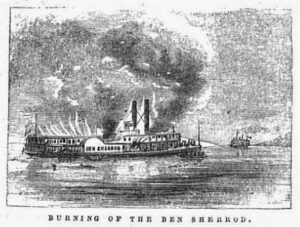 There are certain things which really should never be mixed together. One of the biggest is alcohol and the operation of any vehicle. That fact was made perfectly clear on May 8, 1837, when the steamship, Ben Sherrod was headed down the Mississippi River. The American side-wheel steamer Ben Sherrod, weighing 393 tons, was under the command of Captain Castleman, and was en route from New Orleans to Louisville carrying about 200 passengers, general freight, a large quantity of coins consigned to banks in Tennessee, and a considerable amount of wealth belonging to private individuals. As was not uncommon, the Ben Sherrod was engaged in an exciting race with the steamer Prairie. It was one o’clock in the morning, and the boat was about fourteen miles from Fort Adams, pushing her way up the Mississippi with as much speed as she could muster. Still, the Ben Sherrod was in sight of, but lagging behind the Prairie. The crew of the Ben Sherrod were determined, if possible, to pass the Prairie by, so the firemen were shoving in the pine knots, and sprinkling rosin over the coal…basically doing their best to raise more steam.
There are certain things which really should never be mixed together. One of the biggest is alcohol and the operation of any vehicle. That fact was made perfectly clear on May 8, 1837, when the steamship, Ben Sherrod was headed down the Mississippi River. The American side-wheel steamer Ben Sherrod, weighing 393 tons, was under the command of Captain Castleman, and was en route from New Orleans to Louisville carrying about 200 passengers, general freight, a large quantity of coins consigned to banks in Tennessee, and a considerable amount of wealth belonging to private individuals. As was not uncommon, the Ben Sherrod was engaged in an exciting race with the steamer Prairie. It was one o’clock in the morning, and the boat was about fourteen miles from Fort Adams, pushing her way up the Mississippi with as much speed as she could muster. Still, the Ben Sherrod was in sight of, but lagging behind the Prairie. The crew of the Ben Sherrod were determined, if possible, to pass the Prairie by, so the firemen were shoving in the pine knots, and sprinkling rosin over the coal…basically doing their best to raise more steam.
In addition to the necessary supplies needed to operate the steamship, they also had a barrel of whisky set before them, and they were drinking from it heavily and often, until they were very drunk. As they continued to load the boilers to dangerous levels, the boilers became so hot that the sixty cords of wood on board burst into flames. The Ben Sherrod was soon completely enveloped in flames, and to make matters worse, the drunken men ran away from their posts, rather than doing whatever they could to put out the fire and get the passengers to safety. The approximately 200 passengers were sound asleep, completely oblivious to the terror that awaited them.
When the deck hands discovered the fire, they too left their posts and ran for the yawl (a type of boat that can be used with sails or oars…basically a lifeboat), without warning the passengers. Captain Castleman tried to dispel the panic and confusion, by telling them the fire was extinguished. He tried to keep them from lowering of the yawl, which was what they were attempting. Then, the screams of nearly three hundred and fifty persons on board could be heard. The panic was obvious and could be heard for several miles. They were yelling, “To the shore! To the shore!” The boat made for the starboard shore, but could not reach as the wheel ropes soon burned. When they decided to let off the pent-up steam, the boat kept on up the river. The scene was simply horrific. The yawl, which had been filled with the crew, had sunk, drowning nearly all who were in it. That left the passengers with no choice but to jump from the burning ship, without even taking time to dress. There were ten ladies who all went silently overboard. Some drowned instantly, and others clung to planks. In the end, only two of the ladies were saved. While drowning was horrific enough, worse yet was the fact that several passengers were burned alive.
When the steamer, Colombus arrived on scene 30 minutes later, they found a man named Ray, from Louisville, Kentucky, clinging to a rope at the bow of the boat, where he had jumped to in an effort to escape the heat and flames. Ray’s face and arms were terribly burned while clinging to the boat, but he had to hang on and endure the agony. He lost twenty thousand dollars in coins, but he saved his life, so I’m sure the money was of little consequence to him. The steamboat Alton arrived half an hour after the Columbus, but it carelessly came in too fast, causing the drowning of many people who were floating in the water. As Alton came in, the people were too weak to get out of the way. To make matters worse, it was dark, and they were probably difficult to see in the water. A gentleman by the name of Hamilton, from Limestone County, Alabama, was floating on a barrel, with one of the ladies, when the Alton came up, washing them both under. The lady drowned, but Hamilton came up and floated down the river fifteen miles. Finally, he was rescued by the steamer Statesman. A man named McDowell stayed afloat for some time, fighting against the current, and floated only two miles down the river, finally reaching the shore, but his wife, who was floating on a plank, was drowned when the steamer Alton came rushing in. In all only two ladies out of ten who were on board were saved…one of these was the captain’s wife and the other was Mrs Smith, of New Orleans. Of the 300 people on board, it was later estimated that only 70 had escaped with their lives. The loss of Ben Sherrod was complete negligence, and that only because I can’t think of something worse to call it right now.
Many people were furious with the captain of the Prairie, for leaving a boat in flames without turning around to give aid to the victims. Another man, this one in a canoe near the scene of the disaster refused to save any who were floating in the water, unless they promised to pay him handsomely for his services…scum, if you ask me. The Ben Sherrod disaster was one of the worst calamities that ever occurred on the Mississippi river. During the burning of the Ben Sherrod eight different explosions occurred; first, barrels of whiskey, brandy, and then the boilers blew up with a huge explosion. Finally, forty barrels of gunpowder exploded. That explosion could be heard for miles. The wreckage blew apart, scattering fragments in all directions. Immediately after that  explosion, the wreck sunk out of sight just above Fort Adams, taking with it a large quantity of coins, which was on its way to the Tennessee Banks.
explosion, the wreck sunk out of sight just above Fort Adams, taking with it a large quantity of coins, which was on its way to the Tennessee Banks.
The ship remained in the river for years, but now, the remains of the Ben Sherrod are currently being recovered by a consortium of private investors. The remains of the steamship are lying upside down about one mile from Fort Adams and a little over a mile from the present channel of the Mississippi River. The ship has been buried under approximately seventy feet of sand and mud, possibly making it hard to find. So far, about 50 feet of hull timbers have been uncovered. They were in surprisingly excellent condition and the group is hoping that the cargo is there (especially all those coins), still intact, and as well preserved.
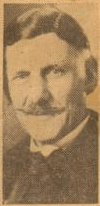
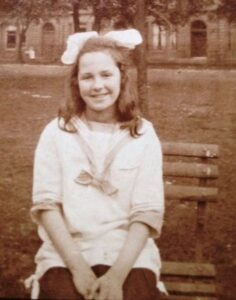 Ian Holbourn born John Bernard Stoughton Holbourn on November 5, 1872, to Alfred Holborn and Mary Jane Stoughton. John Bernard, who later went by Ian, which is the Scottish version of John, was the eldest of their two children. His mother died when he was very young and due to his father’s ill health, the children were sent to live with their stern Aunt Augusta. As a young man he became fond of the remote Scottish island of Foula, which he succeeded in purchasing around 1900, thus becoming its laird (owner of a large, long-established Scottish estate). He was also a professor and lecturer for the University of Oxford, and a writer.
Ian Holbourn born John Bernard Stoughton Holbourn on November 5, 1872, to Alfred Holborn and Mary Jane Stoughton. John Bernard, who later went by Ian, which is the Scottish version of John, was the eldest of their two children. His mother died when he was very young and due to his father’s ill health, the children were sent to live with their stern Aunt Augusta. As a young man he became fond of the remote Scottish island of Foula, which he succeeded in purchasing around 1900, thus becoming its laird (owner of a large, long-established Scottish estate). He was also a professor and lecturer for the University of Oxford, and a writer.
Avis Gertrude Dolphin was born on August 24, 1902, in Rotherham, Yorkshire, England to John Henry Dolphin and Alice Schofield Dolphin. Avis as twelve years old when her parents booked passage for her and two nurses, Sarah Smith and Hilda Ellis, on RMS Lusitania, bound for England where Avis was to attend school while living with her grandparents. It was on that voyage that Ian Holbourn and Avis Dolphin would cross paths and their lives would be forever changed.
Ian befriended the young girl, who seemed to need a friend at the time. They talked of many things from the journey they were on to her upcoming school. She told Ian in one of their talks, that books for girls were uninteresting. Ian, an author, wrote his book “The Child of the Moat, A Story for Girls, 1557 A.D.” for Avis in 1916. The two would be friends for the rest of Ian’s life, but only because they were both destined to survive the sinking of the ship they met on. RMS Lusitania was hit by a torpedo launched from a German U-boat on May 7, 1915. That afternoon, RMS Lusitania was 11 miles off the southern coast of Ireland inside the declared war zone. The torpedo triggered in internal explosion. The damage caused her to sink in 18 minutes, killing 1,197 passengers and crew. Eventually, 289 bodies were recovered or found from the wreck. Only 761 people survived, among them, Avis Dolphin and Ian Holbourn. Ian was married to Marion Constance Archer-Shepherd, 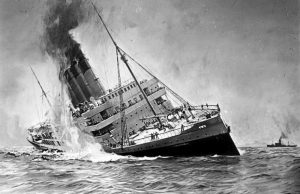
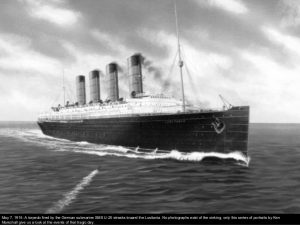 and together they had three sons. Ian died on September 15, 1935. Avis was introduced to journalist Thomas Foley during a visit to Holbourn’s home, and the two were married in 1926. Avis lived the remainder of her life in Snowdonia, Wales and died of natural causes in Meirionydd, which is a coastal and mountainous region of Wales, at the age of 93 on February 5, 1996.
and together they had three sons. Ian died on September 15, 1935. Avis was introduced to journalist Thomas Foley during a visit to Holbourn’s home, and the two were married in 1926. Avis lived the remainder of her life in Snowdonia, Wales and died of natural causes in Meirionydd, which is a coastal and mountainous region of Wales, at the age of 93 on February 5, 1996.
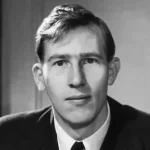
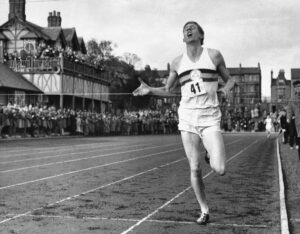 World records come and world records go. Some take longer to beat than others. One record had stood for nine years. It was a record involving human endurance, and after a while, many believed that the recorded for the four-minute mile seemed like it just couldn’t be broken. so many athletes had tried and failed to break the record of 4 minutes 1.3 seconds set by Gunder Hagg of Sweden in 1945. Nevertheless, a hard to break record is a great motivator, and this one drew lots of athletes who were determined to break that record.
World records come and world records go. Some take longer to beat than others. One record had stood for nine years. It was a record involving human endurance, and after a while, many believed that the recorded for the four-minute mile seemed like it just couldn’t be broken. so many athletes had tried and failed to break the record of 4 minutes 1.3 seconds set by Gunder Hagg of Sweden in 1945. Nevertheless, a hard to break record is a great motivator, and this one drew lots of athletes who were determined to break that record.
By the early 1950s, and because so many athletes had tried and failed to run a mile in less than four minutes, people began to believe that it was a physical, and maybe even a phycological impossibility. Still, that seldom stops people from trying. In fact, in the early 1950s, several runners had dedicated themselves to being the first to cross into the three-minute zone. The goal became such a big deal that the crowds actually held their breath waiting for the time on a run to be announced. I’m sure that each failure was a colossal disappointment.
On May 6, 1954, in Oxford, England, 25-year-old medical student Roger Bannister finally succeeded in breaking track and field’s most notorious barrier…the four-minute mile. Bannister, who was born in Harrow, England, in 1929, was a top mile-runner while a student at the University of Oxford and at Saint Mary’s Hospital Medical School in London. He won British championships in the mile run, in 1951 and 1953. As he prepared himself for his first competitive race of the 1954 season, Bannister researched the mechanics of running and trained using new scientific methods he developed through his research.
Bannister came to the Iffley Road track in Oxford on May 6, 1954, for the annual match between the Amateur Athletic Association and Oxford University. Bannister was running for the Amateur Athletic Association and against his alma mater, Oxford University. The conditions that day were far from ideal. It had been windy and raining, and a considerable crosswind was still blowing across the track as the mile race was set to begin. At precisely 6pm, the starting gun was fired. Bannister had planned the race very carefully. He was aided by Chris Brasher, a former Cambridge runner who acted as a pacemaker. For the first half-mile, Brasher led the field, with Bannister a close second. Then, another runner took up the lead and reached the three-quarter-mile mark in 3 minutes .4 seconds. Bannister passed the mark at 3 minutes .7 seconds. Then, as he had planned, Bannister took the lead with about 350 yards to go and sprinted past an unofficial timekeeper at the 1,500-meter mark in 3 minutes 43 seconds, thus equaling the world’s record for that distance. Then, Bannister poured it on, throwing in all his reserves. When he broke the tape the time was 3 minutes 59.4 seconds. The announcer didn’t even get the whole time out before the crown erupted. All they needed to hear was “three minutes.” The rest didn’t matter, because the record had been broken!! Bannister’s official time was 3 minutes 59.4 seconds. It was very close to the 4-minute mark, but that didn’t matter, because .6 seconds still made it under four minutes. As soon as the first part of his score was the crown went wild!!
Bannister went on to win British and Empire championships in the mile run, and the European title in the 1,500-meter event in 1954. That was all it took for him. Going out on top, Bannister retired from athletic competition at the end of 1954, to pursue his medical career full time. He wrote a book about his experience in 1955, called The Four Minute Mile. Bannister went on to earn a medical degree from Oxford and became a neurologist. In 1955, Bannister married the Swedish artist Moyra Elver Jacobsson in Basel, Switzerland. Together they had four children…Carol Bannister (born 1957), Clive Bannister (born 1959), Thurstan Bannister (born 1960), and Charlotte Bannister (born 1963). In 1975, he was knighted by Queen Elizabeth II. He died of pneumonia at the John Radcliffe Hospital in Oxford on March 3, 2018.
As for his world record in the mile, well it did not stand long. The record continued to be lowered with 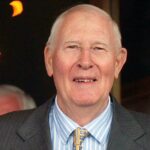
 increasingly controlled climatic and surface conditions, more accurate timing devices, and improvements in training and running techniques. A “sub-four” mile run is still a notable time, but top international runners now routinely accomplish the feat. These days, the “mile race” has been replaced in the Olympics, because the mile is not a metric measurement. Nevertheless, it continues to be run by many top runners as a glamour event. While the sub-four race time is now a rather common time for the mile, no one else can claim the first-time record, because that belongs exclusively to Roger Bannister.
increasingly controlled climatic and surface conditions, more accurate timing devices, and improvements in training and running techniques. A “sub-four” mile run is still a notable time, but top international runners now routinely accomplish the feat. These days, the “mile race” has been replaced in the Olympics, because the mile is not a metric measurement. Nevertheless, it continues to be run by many top runners as a glamour event. While the sub-four race time is now a rather common time for the mile, no one else can claim the first-time record, because that belongs exclusively to Roger Bannister.

